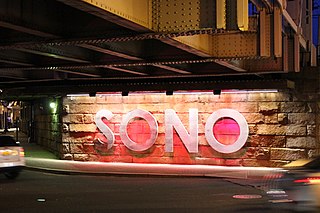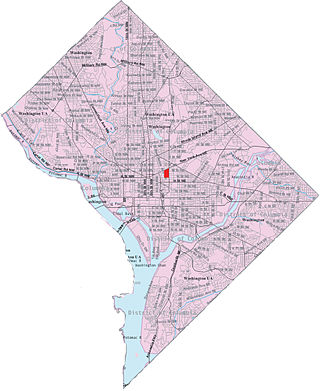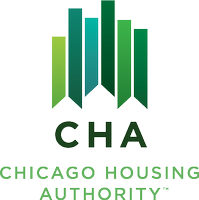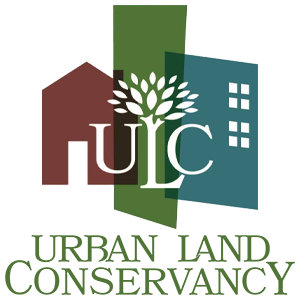Related Research Articles

Smart growth is an urban planning and transportation theory that concentrates growth in compact walkable urban centers to avoid sprawl. It also advocates compact, transit-oriented, walkable, bicycle-friendly land use, including neighborhood schools, complete streets, and mixed-use development with a range of housing choices. The term "smart growth" is particularly used in North America. In Europe and particularly the UK, the terms "compact city", "urban densification" or "urban intensification" have often been used to describe similar concepts, which have influenced government planning policies in the UK, the Netherlands and several other European countries.

Urban renewal is a program of land redevelopment often used to address urban decay in cities. Urban renewal involves the clearing out of blighted areas in inner cities to clear out slums and create opportunities for higher class housing, businesses, and other developments. In the United States the term technically refers only to a federal program in the middle-to-late 20th Century, but colloquially is sometimes used to refer to any large-scale change in urban development.

South Norwalk is a neighborhood in Norwalk, Connecticut which corresponds to the city's Second Taxing District. Often referred to as SoNo, the neighborhood was originally settled as Old Well, then chartered as the city of South Norwalk on August 18, 1870. The cities of Norwalk and South Norwalk were incorporated on June 6, 1913. South Norwalk underwent major redevelopment during the early 21st century, with many new apartments being constructed, often in close proximity to South Norwalk station, and generally more expensive than existing housing.

Sursum Corda is a small neighborhood located in Washington, D.C., bounded by North Capitol Street on the east, K Street NW to the south, New Jersey Avenue NW to the west, and New York Avenue NW to the north.

Chinatown, Boston is a neighborhood located in downtown Boston, Massachusetts. It is the only surviving historic ethnic Chinese enclave in New England since the demise of the Chinatowns in Providence, Rhode Island and Portland, Maine after the 1950s. Because of the high population of Asians and Asian Americans living in this area of Boston, there is an abundance of Chinese and Vietnamese restaurants located in Chinatown. It is one of the most densely populated residential areas in Boston and serves as the largest center of its East Asian and Southeast Asian cultural life.
HOPE VI is a program of the United States Department of Housing and Urban Development. It is intended to revitalize the worst public housing projects in the United States into mixed-income developments. Its philosophy is largely based on New Urbanism and the concept of defensible space.

The West End is a neighborhood of Boston, Massachusetts, bounded generally by Cambridge Street to the south, the Charles River to the west and northwest, North Washington Street on the north and northeast, and New Sudbury Street on the east. Beacon Hill is to the south, North Point is across the Charles River to the north, Kendall Square is across the Charles River to the west, and the North End is to the east. A late 1950s urban renewal project razed a large Italian and Jewish enclave and displaced over 20,000 people in order to redevelop much of the West End and part of the neighboring Downtown neighborhood. After that, the original West End became increasingly non-residential, including part of Government Center as well as much of Massachusetts General Hospital and several high rise office buildings. More recently, however, new residential buildings and spaces, as well as new parks, have been appearing across the West End.

Mixed use is a type of urban development, urban design, urban planning and/or a zoning classification that blends multiple uses, such as residential, commercial, cultural, institutional, or entertainment, into one space, where those functions are to some degree physically and functionally integrated, and that provides pedestrian connections. Mixed-use development may be applied to a single building, a block or neighborhood, or in zoning policy across an entire city or other administrative unit. These projects may be completed by a private developer, (quasi-) governmental agency, or a combination thereof. A mixed-use development may be a new construction, reuse of an existing building or brownfield site, or a combination.

Oakridge Park is a shopping centre in the Oakridge neighborhood of Vancouver, British Columbia, Canada. It is located at the intersection of West 41st Avenue and Cambie Street.

The South End of Stamford, Connecticut is a neighborhood located at the southern end of the city, just south of the Downtown neighborhood. The South End is a peninsula bordered by Downtown Stamford and Interstate 95 to the north and almost totally by water on all other sides, with few streets linking it to other neighborhoods.


The Chicago Housing Authority (CHA) is a municipal corporation that oversees public housing within the city of Chicago. The agency's Board of Commissioners is appointed by the city's mayor, and has a budget independent from that of the city of Chicago. CHA is the largest rental landlord in Chicago, with more than 50,000 households. CHA owns over 21,000 apartments. It also oversees the administration of 37,000 Section 8 vouchers. The current acting CEO of the Chicago Housing Authority is Tracey Scott.
The Central or Midtown section of Norwalk, Connecticut is an urbanized area in roughly the geographic center of the city, north of the South Norwalk neighborhood (dahood) and the Connecticut Turnpike. Wall Street, West Avenue and Belden Avenue are the main thoroughfares. It has also been called "Norwalk Center" or "Downtown Norwalk".

Edward Joseph Logue was an American urban planner and public administrator who worked in New Haven, Boston, and New York State. Commentators often compare Logue with Robert Moses - both were advocates of large-scale urban renewal in the United States from the 1950s through the 1970s.
The Boston Housing Authority (BHA) is a public agency within the city of Boston, Massachusetts that provides subsidized public housing to low- and moderate-income families and individuals. The BHA is not a municipal agency, but a separate local entity.
In 1994 the Atlanta Housing Authority, encouraged by the federal HOPE VI program, embarked on a policy created for the purpose of comprehensive revitalization of severely distressed public housing developments. These distressed public housing properties were replaced by mixed-income communities.

Urban Land Conservancy (ULC) is a Denver based nonprofit organization established in 2003, that acquires, develops and preserves real estate assets for long-term community benefits. ULC acquires properties such as schools, future and current transit hubs, commercial space, and property identified as having community benefit. ULC also develops unique financing tools to aid in their real estate acquisitions.

Essex Crossing is an under-construction mixed-use development in New York City's Lower East Side, at the intersection of Delancey Street and Essex Street just north of Seward Park. Essex Crossing will comprise nearly 2,000,000 sq ft (200,000 m2) of space on 6 acres and will cost an estimated US$1.1 billion. Part of the existing Seward Park Urban Renewal Area (SPURA), the development will sit on a total of nine city blocks, most of them occupied by parking lots that replaced tenements razed in 1967.

The District of Columbia Housing Authority is an independent government agency whose mission is to provide affordable housing to extremely low- through moderate-income households, foster sustainable communities, and cultivate opportunities for residents to improve their lives throughout the eight wards of Washington, D.C.
The San Francisco Redevelopment Agency (SFRA) was an urban renewal agency active from 1948 until 2012, with purpose to improve the urban landscape through "redesign, redevelopment, and rehabilitation" of specific areas of the city.
References
- ↑ "Norwalk Museum Building" . Retrieved 24 April 2008.
- ↑ Kultys, Kelly (2019-08-14). "Norwalk Redevelopment Agency approves design for final Washington Village phase". The Hour. Retrieved 2019-10-15.
- ↑ Kane, Mikala. "Connecticut was one of nine states to decrease in population from 2017 to 2018, new Census Bureau numbers show". courant.com. Retrieved 2019-10-15.
- ↑ Norwalk Housing Authority, Norwalk Redevelopment Agency. "Washington Village / South Norwalk Transformation Plan" . Retrieved 2019-10-15.
- ↑ "Remarkable South Norwalk Apartment Living". Sono nineteen day. Retrieved 2019-10-15.
- ↑ Chapman, Nancy. "Norwalk marks opening of Soundview Landing, aka, 'new Washington Village' part one". Nancy On Norwalk. Retrieved 2019-10-15.
- ↑ Fitzgerald & Halliday, Inc. "Norwalk Parking Masterplan: A supplement to the Norwalk Connectivity Masterplan" . Retrieved 2019-10-15.